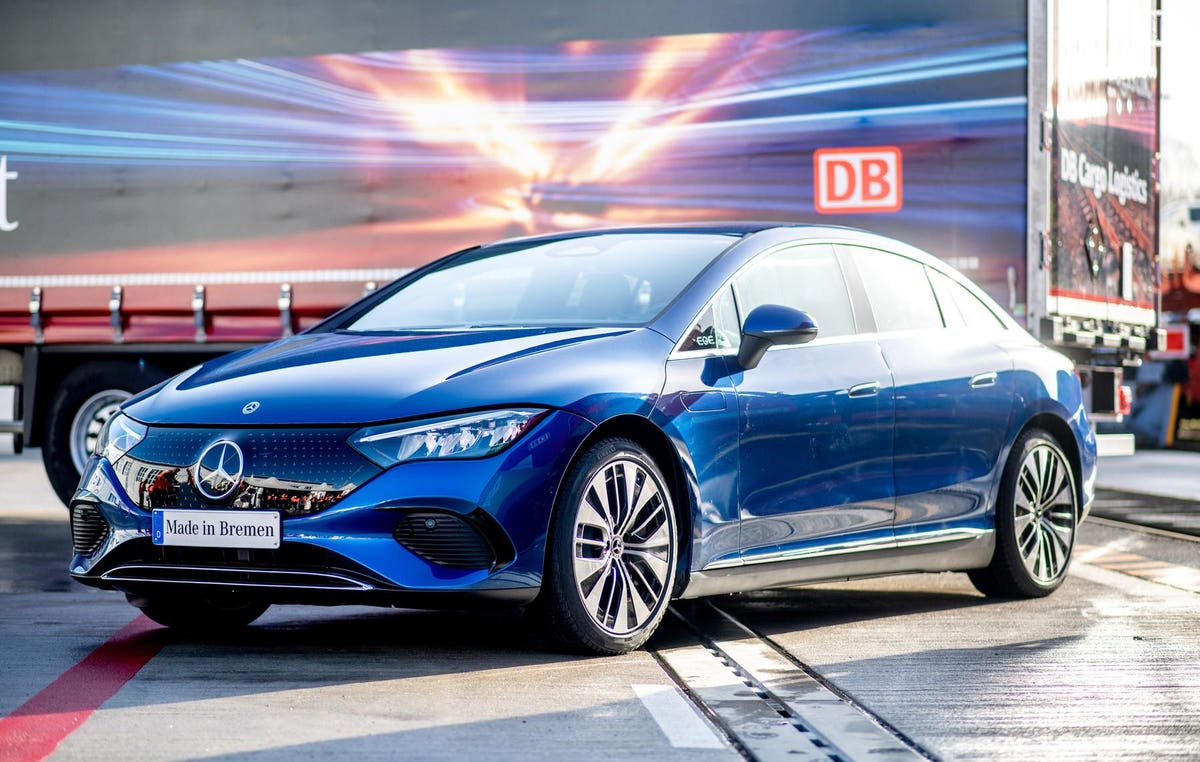Mercedes-Benz reported strong first-quarter profits and analysts are confident that will continue through 2023. But longer-term, China’s gathering electric car challenge in Europe could be a problem even for the premium sector.
In the first quarter, Mercedes-Benz raised earnings before interest and tax by 5% compared with the same period of 2022 to €5.2 billion ($5.6 billion), as sales rose 8% to €37.5 billion ($41.4 billion). The profit margin for 2023 will be at the high end of the 12 to 14% target, Mercedes said.
Analysts saw positives for the whole of 2023 from the latest numbers.
Last year, the shortage of chips allowed Mercedes and other upmarket players like BMW, Audi and Porsche to concentrate sales on top-end models with huge profits, and sacrifice sales of cheaper SUVs and sedans. Counter-intuitively, as unit sales fell, overall profits were improved.
Investment researcher Jefferies said as chip supply was restored and normal production and sales levels returned, Mercedes’ profit margins were being maintained.
“(Mercedes) continues to defy expectations of margin normalization on strong mix, set to benefit from a new E class later this year, resilient trading in China and the elimination of residual loss centers like Smart and Formula 1,” Jefferies said in a report.
The little Smart city car is now electric and built by Zhejiang Geely Holding Group in China for Mercedes. The Smart was a serial loss-maker for Mercedes, at one point reportedly losing up to $4,000 for every sale.
Bernstein Research said the first quarter results will reset investors’ expectations for 2023.
“Our forecasts now see higher margins for 2023 as falling raw material prices mitigate risks around net pricing, enabling Mercedes to comfortably deliver on its free cash flow guidance, even with a more challenging 2nd half,” Bernstein said in a report.
Mercedes’ electric car timetable looked impressive, as the latest models switch to designs primarily for electric vehicles and not based on traditional combustion engine ones.
“Deliveries of the EQE and EQS SUV will accelerate the electric vehicle (EV) transition. These represent the first SUVs built on Mercedes’ existing battery electric-only EVA platform, and are expected to help drive Mercedes’s EV sales penetration to around 15% this year, up from 7.3% in 2022 and 10% in the first quarter of 2023,” Bernstein said.
This looks impressive until you consider the scale of the Chinese EV assault coming over the horizon.
Patrick Koller, CEO of French auto supplier Faurecia, recently said China could sell 1 million electric cars a year of all types in Europe, about 8% of the market last year. He didn’t offer a timescale or any detgails but amongst that huge total there will be many middle-market vehicles, some entry-level ones, and some aimed straight at Mercedes, BMW, Audi and Porsche. China’s Geely is already challenging Tesla in Europe with its Polestar 2. BYD has the compact SUV, the Atto, the Tang mid-size SUV and the Han midsize sedan pointing upmarket at the Germans.
The Financial Times Lex column said like most western carmakers, Mercedes has an exposed flank in the form of electric vehicles from China, and price cuts from Tesla.
Agreeing with Faurecia’s Koller, Lex said an export push from China is inevitable.
“Everyone knows it will hit European volume producers. The subtler point is that Mercedes (and BMW, Audi, Porsche) may be in the line of fire too. The resilience of its brand will be tested again. The company needs to speed up its electrification,” Lex said.
Read the full article here


